Some fans of autumn sage (
Salvia greggii)
will rave about its beautiful flowers. Others will praise the fact that deer and rabbits leave it alone. Desert gardeners love that it will thrive underneath their favorite tree, while Southern gardeners like to plant it in full sun. And people aren't the only ones who find the flowers irresistible — so do butterflies and hummingbirds.
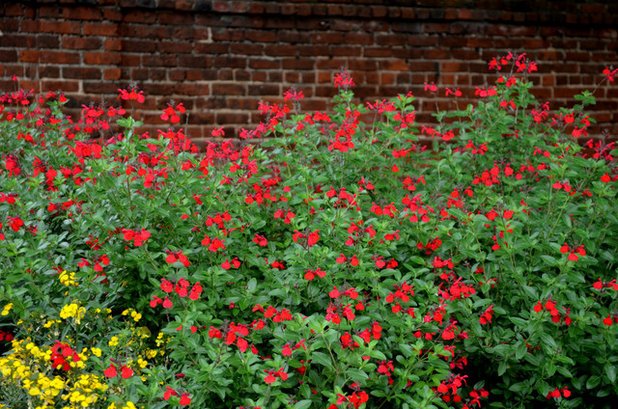
Noelle Johnson Landscape Consulting
Botanical name: Salvia greggiiCommon name: Autumn sage
Origin: Native to Texas, New Mexico and Mexico
Where it will grow: Hardy to 0 degrees Fahrenheit (USDA zone 7; find your zone)
Water requirement: Low to medium
Light requirement: Filtered shade in the low desert; full sun in other climates
Mature size: 2 feet tall and wide
Benefits and tolerances: Drought tolerant once established, but looks best with deep watering weekly; attracts butterflies and hummingbirds
Seasonal interest: Flowers in fall and spring in the low desert; blooms in summer in cooler climates
When to plant: Fall or spring
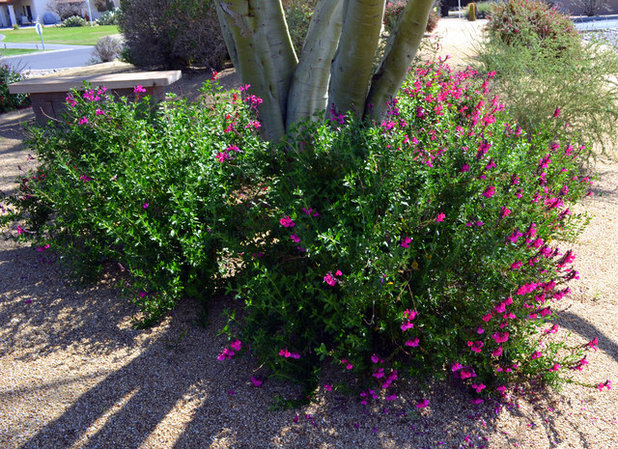
Noelle Johnson Landscape Consulting
Distinguishing traits. Autumn sage is a small- to medium-size shrub that thrives in lightly shaded areas. Tubular flowers appear in fall and last until spring in low-desert gardens. In cooler climates the flowering begins in spring and continues into summer.
The bright green foliage is attractive and resistant to both deer and rabbits.
Shown: Bright pink autumn sage planted around a
Foothills Palo Verde tree, which creates protection from the hot Arizona desert sun.
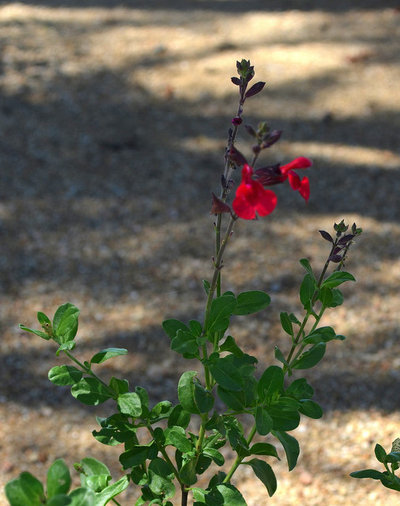
Noelle Johnson Landscape Consulting
The colorful, tubular flowers are irresistible to hummingbirds as well as butterflies, which is why this plant is a must-have for any butterfly or hummingbird garden.
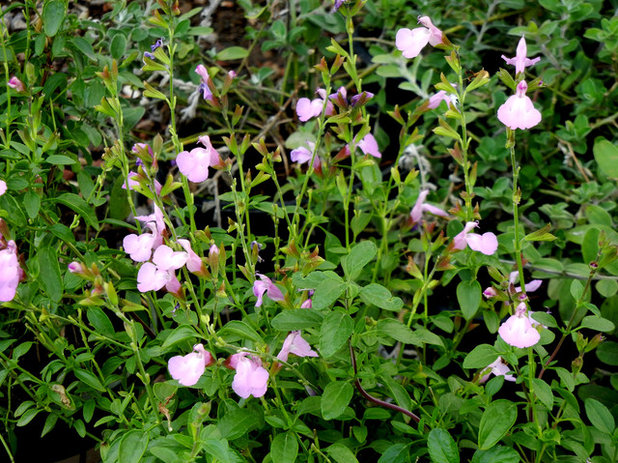
Noelle Johnson Landscape Consulting
Autumn sage (
Salvia greggii)
frequently hybridizes with
Salvia microphylla. The hybrids are sometimes referred to as
Salvia x
jamensis,
with flower color variations including peach, pale pink, purple, white and bicolor. The hybrids have the same growth habits and requirements as autumn sage.
Shown: 'Playa Rosa'
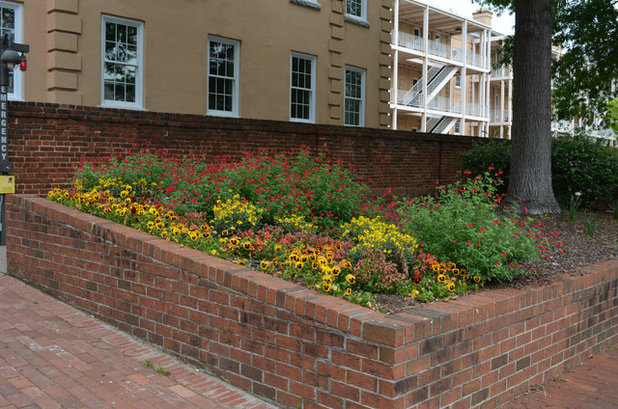
Noelle Johnson Landscape Consulting
How to use it. This small perennial shrub looks great paired with yellow-flowering perennials such as angelita daisy,
coreopsis, damianita and
rudbeckia.
Use autumn sage as an understory plant by adding it around a tree that produces light shade. It can grow in full shade, but flowering will be reduced. Avoid planting it in areas that receive full afternoon sun — northern or eastern exposures are best.
Shown: Autumn sage planted with yellow pansies at the University of South Carolina
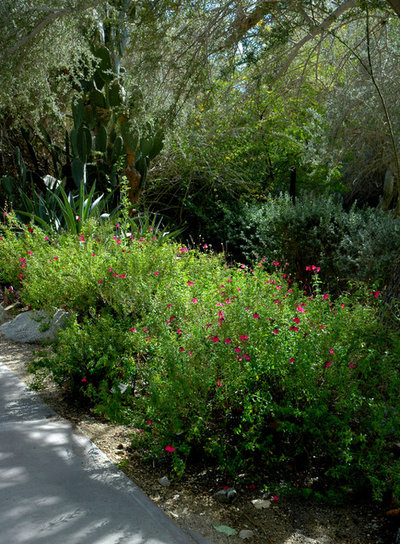
Noelle Johnson Landscape Consulting
Autumn sage can be used to line a pathway or as a beautiful backdrop to a perennial bed.
Shown: Autumn sage planted alongside a pathway at The Living Desert in Palm Desert, California.
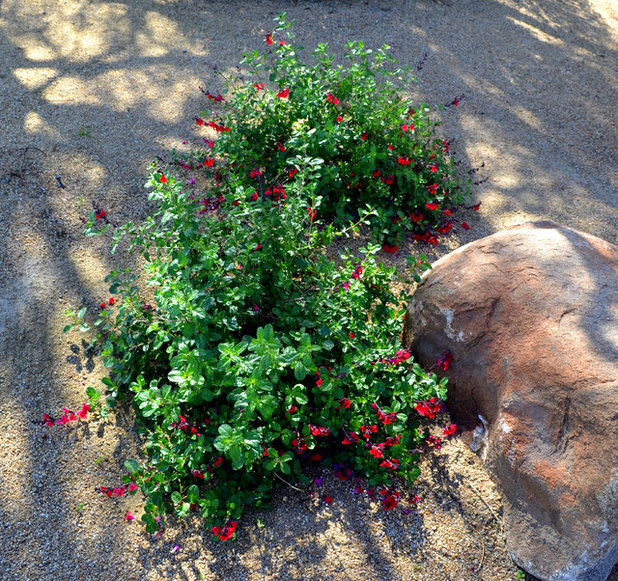
Noelle Johnson Landscape Consulting
Planting notes. Plant it in well-drained soil. Prune it back to 1 foot after the last frost date and apply a slow-release fertilizer in spring. The fertilizer will help the autumn sage handle the hot temperatures of summer more easily.





